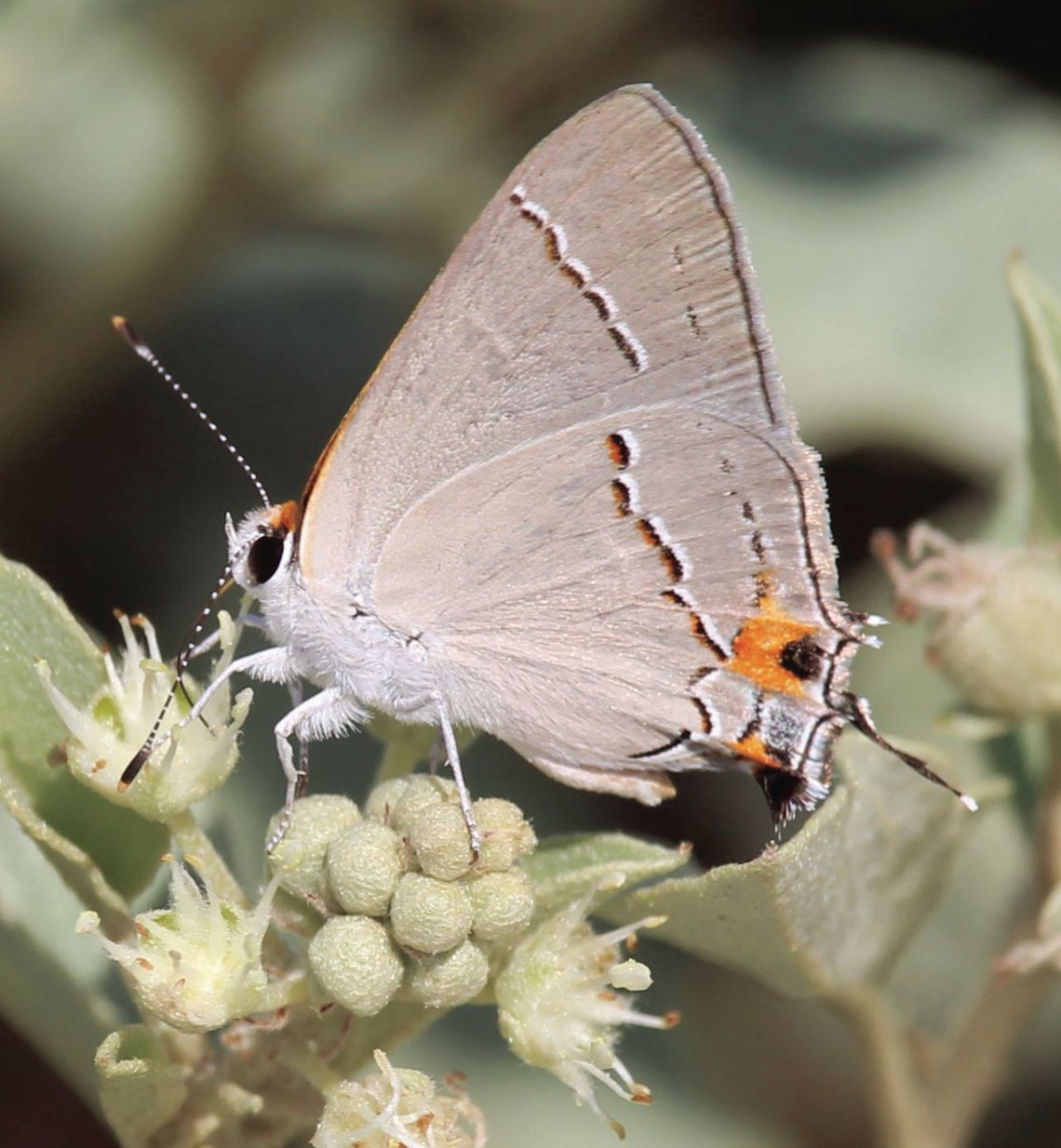If one looks closely into the natural world around them, they would quickly be surprised how some diminutive animals that appear frail are quite resilient and tough. Small butterflies known as the Scrub-Hairstreaks are a perfect example of this.
There are 10 species of Scrub-Hairstreaks that occur in Texas, and one, the Gray Hairstreak, is by far the most commonly observed species.
The Gray Hairstreak (Strymon melinus) has a widespread distribution that extends from coast to coast across the continental United States (including the entirety of this great state) southward through southern Mexico and Central America into Venezuela.
Possessing such a large natural range, they are not too picky when it comes to habitat selection (varying from desert scrublands to coastal marsy meadows to higher elevation pine-oak forests and everything in between) if there are ample amounts of flowering plants for the adults and larvae to feed upon.
The underwings of the Gray Hairstreak, as the name implies, are typically slate gray to almost blue.
As with most hairsteaks, there is a series of white dashes along the underwings, followed by a series of black dashes. The Gray Hairstreak also possesses a series of orange-red dashes in front of the white and black dashes, most prominently on the lower underwing. The underwings are outlined in white (with an inside black border) and there are generally adorned with one (sometimes two) orange-red and black spots.
The tail is paired and very thin. The eyes are large and black while the antennae are black-and-white banded with orange tips. The abdomen is gray in females and orange in males. As mentioned previously, this species is quite small, although not as small as other members of this genus.
Adults have a wingspan of just under one and one-half inches.
As stated before, adults can be observed in just about any habitat that the great state of Texas has to offer. Adults feed primarily on the nectar of a variety of flowers by utilizing an appendage known as a proboscis to feed on these items. The proboscis is long and almost threadlike, and in times of non-use is curled up under the head of the butterfly.
Gray Hairstreaks, like other butterfly species, undergo a four-stage life cycle that can be described as nothing short of miraculous. In the beginning stage, their life begins as an egg, which hatches after a few short days into the next stage. Upon hatching, the larvae are known as caterpillars, and at this stage, the growth rate is highly accelerated. Caterpillars can eat twice their body weight in a single day, and as such, grow quickly. As they grow, they literally grow out of their skins, and they shed their outer layer of skin up to five times (known as molting) before they enter the next stage of their life cycle. After the caterpillar finds a spot in which it feels is secure, it will pupate as it forms a protective shell about it known as a chrysalis. Inside of this shell, the larvae changes into the butterfly that it will soon become. After about a week, the adult will emerge from this shell with its wings intact, although they are crumpled into small balls on the sides of the body. The butterfly will then pump a clear fluid into the veins of their wings, causing them to expand much the same way a stick can reinforce a kite.
Whereas most caterpillars of various species will feed exclusively on one or two species of plants, the larvae form of the Gray Hairstreak is nowhere near this selective. It has been known to feed on dozens of plants, and unlike many other species, this caterpillar will feed on the fruit and not the leaves.
This species has been known to be so common and familiar within its range that there have been several experts who say that this species, if not for the Monarch, would be the National Butterfly.





















